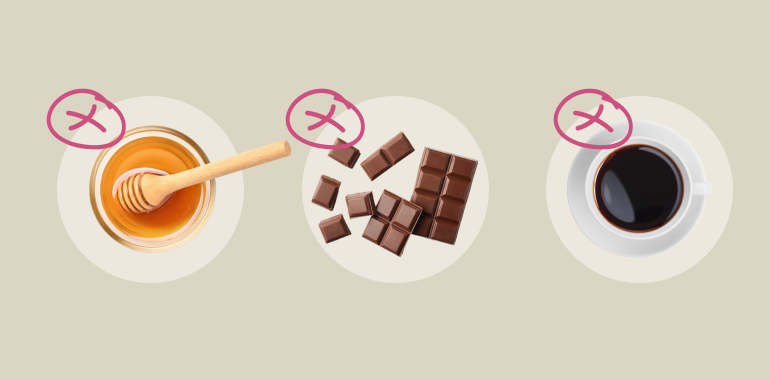Table Of Contents
How Many Calories Does a Woman Burn on Her Period?
The menstrual cycle naturally affects your metabolic rate, with research showing that most women experience increased calorie burning during certain phases. During the luteal phase—the time between ovulation and the start of menstruation—your basal metabolic rate (BMR) increases by approximately 10-20%. This metabolic boost means your body needs an extra 100-300 calories daily just to maintain normal functions.
Studies indicate that the metabolic rate typically rises by 3-5% during menstruation itself. While this might seem modest, it can add up over time for women with active lifestyles. This small increase happens because your body is working harder during this time, even when you’re resting.
Each woman has her individual resting metabolic rate (RMR), which determines how many calories your body burns at rest. If your RMR rises during your period, you’ll automatically burn more calories without additional effort. This variation is completely normal and explains why some women might notice changes in their energy requirements during different cycle phases.
The Science Behind Calorie Burning During Menstruation
The fluctuation in calorie burning during your period is primarily driven by hormonal changes. After ovulation, your body produces more progesterone, which slightly increases your core temperature and metabolic rate. This hormone prepares your body for a potential pregnancy, requiring more energy even if conception doesn’t occur.
Research published in medical journals confirms that metabolic changes are most pronounced during the luteal phase. Your body’s cells work harder during this time, burning more energy even when you’re not active. This biological process explains why you might feel hungrier or need more fuel before and during your period.
These metabolic shifts aren’t just theoretical—they have real impacts on your daily energy requirements. Understanding this science can help you adjust your nutrition strategy throughout your cycle and avoid unnecessary restrictions when your body genuinely needs more fuel.

Menstrual Cycle and Your Metabolic Rate
Your menstrual cycle consists of distinct phases, each with its own metabolic signature. During the follicular phase (the first half of your cycle), estrogen levels rise, which typically maintains a steady metabolic rate. As you enter the luteal phase before menstruation begins, progesterone increases and causes that 10-20% rise in your BMR.
This metabolic fluctuation means your body naturally burns more calories during certain parts of your cycle without any extra effort on your part. Your hormones directly influence how efficiently your body uses energy, with progesterone being particularly important for this increased calorie burn.
I’ve found that tracking these natural metabolic changes can help you better understand your energy needs throughout the month. Instead of fighting against these natural fluctuations, you can work with them by adjusting your nutrition accordingly.
Also, read – Does Intermittent Fasting Affect Your Period?
The Luteal Phase: Why Your Body Burns More Energy
The luteal phase deserves special attention because it’s when your body experiences the most significant metabolic changes. During this time, your progesterone levels peak dramatically, causing several physiological changes that increase calorie burning.
This hormonal shift raises your core body temperature by about 0.5°F, which might seem small but requires considerable energy to maintain. Your body also retains more water during this phase, and the metabolic processes needed to manage this fluid balance require additional calories.
Research indicates that these changes can increase your daily calorie needs by up to 300 calories during the luteal phase. This explains why hunger often intensifies before your period starts—your body genuinely needs more fuel to support these metabolic changes.
Calorie Burning During Different Menstrual Phases
Your body’s energy requirements shift throughout your menstrual cycle, with each phase bringing distinct metabolic changes. During menstruation itself, your metabolism remains slightly elevated as your body works to shed the uterine lining. This process requires energy, contributing to that 3-5% increase in calorie burning.
As you transition into the follicular phase after your period ends, estrogen rises while metabolism generally stabilizes. Many women report feeling more energetic during this time, making it ideal for higher-intensity workouts if that aligns with how you feel.
The metabolic peak typically occurs during the late luteal phase, just before your period begins. Your body might burn up to 100-300 additional calories daily during this time, without any change to your activity level. Understanding these fluctuations helps explain why hunger and energy levels naturally vary throughout your cycle.
Period Fatigue: Causes and Management
Period fatigue affects most menstruating women and can feel like a persistent lack of energy that interferes with daily activities. This exhaustion stems primarily from the dramatic hormonal shifts your body experiences during menstruation. As estrogen levels drop, so do serotonin levels, leaving you feeling drained and less motivated.
Physical symptoms like cramping and bloating contribute to this fatigue by consuming energy and disrupting sleep. Pain is inherently draining, whether it’s mild discomfort or severe cramping. Your body diverts energy to manage these symptoms, leaving less for other activities.
To combat period fatigue effectively:
- Engage in gentle physical activity, which can actually boost your energy levels
- Stay hydrated, as dehydration commonly worsens fatigue
- Choose nutrient-dense foods rather than processed options
- Consider iron supplementation if you experience heavy bleeding
Hormonal Fluctuations and Energy Levels
Hormones drive the most significant energy changes throughout your menstrual cycle. During your period, estrogen reaches its lowest point, which typically correlates with decreased energy. This hormone directly affects how your cells produce and use energy, explaining why its decline leaves you feeling drained.
Progesterone, which peaks before your period begins, has a sedative effect that can make you feel more tired. This hormone prepares your body for potential pregnancy by conserving energy, even if conception hasn’t occurred.
Serotonin levels also fluctuate throughout your cycle, dropping significantly during menstruation. This neurotransmitter plays a crucial role in mood regulation and energy perception, so its decline can intensify feelings of fatigue and low motivation.
Also, read – Is It Normal to Gain Weight During Your Period?
Period Pain and Energy Expenditure
Period pain doesn’t just cause discomfort—it actively consumes energy. When your body experiences pain, it triggers stress responses that require significant energy to maintain. This biological reaction helps explain why even mild cramps can leave you feeling exhausted.
The uterine contractions responsible for menstrual cramps require muscle energy, similar to any other muscular activity. These contractions work to shed the uterine lining but use energy that would otherwise be available for daily activities.
Your body also expends energy producing prostaglandins, the compounds responsible for triggering those contractions. Higher levels of these chemicals correlate with more severe cramps and greater energy expenditure, creating a cycle of pain and fatigue that can be challenging to break.
Medical Conditions Affecting Period Energy Levels
Certain medical conditions can intensify period-related fatigue and metabolic changes. Women with endometriosis or PCOS often experience more severe menstrual symptoms, including greater fatigue and energy fluctuations. These conditions alter hormone balances and increase inflammation, requiring more energy from the body.
Thyroid disorders can compound menstrual fatigue since this gland regulates metabolism and energy production. Symptoms of thyroid issues often worsen during menstruation, creating a double burden of fatigue.
Iron-deficiency anemia, more common in menstruating women with heavy flows, significantly impacts energy levels. Without adequate iron, your body can’t produce enough hemoglobin to efficiently deliver oxygen throughout your system. This oxygen deficit makes normal activities feel exhausting, especially during menstruation when blood loss occurs.
Combating Period Fatigue Effectively
While your first instinct might be to rest more during your period, strategic activity often provides better relief from fatigue. Gentle exercise stimulates circulation and endorphin production, naturally boosting your energy levels and improving your mood.
Nutrition plays a crucial role in managing period fatigue. Focus on iron-rich foods like leafy greens, beans, and lean proteins to replace lost iron. Complex carbohydrates provide sustained energy without the crashes associated with simple sugars.
Staying hydrated is particularly important during menstruation. Dehydration commonly exacerbates fatigue, and water helps flush out bloating-causing fluids. Aim for at least eight glasses daily, more if you’re physically active or experiencing heavy bleeding.
Consider tracking your energy levels throughout your cycle to identify patterns and prepare for predictable energy dips. This awareness allows you to schedule demanding activities during higher-energy phases and practice extra self-care when fatigue is likely.
Hunger and Cravings During Your Period
Increased hunger before and during your period isn’t just in your head—it’s driven by real biological changes. Your body burns more calories during the luteal phase, creating a legitimate need for additional fuel. This increased energy requirement explains why hunger signals intensify during this time.
Hormonal shifts directly affect appetite regulation. As progesterone rises, it stimulates hunger signals and can increase food intake by 100-500 calories daily. This hormone specifically triggers cravings for carbohydrate-rich and fatty foods, which provide the quick energy your body seeks.
Blood sugar fluctuations contribute to specific cravings during menstruation. Your body becomes more responsive to insulin during this time, which can cause blood sugar to drop more quickly. When blood sugar decreases, your body naturally craves foods that will raise it rapidly—typically sweets and simple carbohydrates.
The Biological Reasons Behind Period Hunger
Your increased appetite during menstruation serves an evolutionary purpose. Historically, this heightened hunger helped ensure adequate nutrition during potential pregnancy. Even though you might not be pregnant, your body still follows these ancient biological patterns designed to protect reproduction.
The brain’s reward system becomes more sensitive during the luteal phase, making food—especially high-calorie options—more satisfying. This increased reward response explains why comfort foods feel particularly appealing during your period.
Serotonin levels typically drop during menstruation, which can trigger carbohydrate cravings. Carbohydrates boost serotonin production, creating a natural self-medication effect that improves mood and reduces discomfort. This biological mechanism explains the specific desire for sweet or starchy foods rather than protein or vegetables.
Also, read – Simple and Healthy Lunch Ideas for Busy Working Moms
Progesterone’s Effect on Appetite
Progesterone plays a central role in menstrual appetite changes. This hormone peaks during the luteal phase and directly stimulates hunger centers in the brain. Research shows that progesterone increases appetite regardless of actual caloric needs, creating a biological drive to eat more.
Beyond simply increasing hunger, progesterone specifically triggers cravings for calorie-dense foods. It alters taste perception, making sweet and fatty foods taste more appealing than usual. This hormone also slows digestion, which can lead to bloating and discomfort that many women misinterpret as hunger.
The combination of increased hunger signals and specific food preferences creates the perfect storm for period cravings. Understanding that these urges have a hormonal basis can help you approach them with more compassion rather than viewing them as a lack of willpower.
How to Handle Increased Appetite Before Your Period
Instead of fighting against your body’s increased appetite before your period, try working with it through strategic adjustments. Plan nutrient-dense meals that satisfy cravings while providing essential vitamins and minerals. This approach honors your body’s needs without sacrificing nutrition.
Consider these practical strategies for managing increased appetite:
- Eat smaller, more frequent meals to maintain steady blood sugar
- Include protein and fiber in every meal to increase satiety
- Stay well-hydrated, as thirst is often misinterpreted as hunger
- Prepare healthier versions of comfort foods that satisfy cravings
Mindful eating becomes particularly valuable during this time. Pay attention to hunger and fullness cues, eat slowly, and savor each bite. This practice helps prevent overeating while still honoring your body’s legitimate increased energy needs.
Healthy Food Alternatives for Period Cravings
When period cravings strike, having healthier alternatives ready can satisfy your body’s needs without excessive sugar or processed ingredients. For chocolate cravings, dark chocolate provides antioxidants and magnesium, which may help reduce menstrual symptoms. A small portion can satisfy the craving without the sugar overload of milk chocolate.
Try these satisfying alternatives to common period cravings:
- For sweet cravings: Fruit smoothies with bananas, berries, and a little honey
- For salty cravings: Lightly salted edamame or air-popped popcorn with herbs
- For chocolate cravings: Dark chocolate-dipped strawberries or bananas
- For carb cravings: Sweet potatoes with cinnamon or whole grain toast with avocado
Foods rich in magnesium, calcium, and B vitamins can help reduce period symptoms while satisfying cravings. Nuts, seeds, yogurt, and leafy greens provide these nutrients along with protein and fiber that help maintain steady blood sugar levels.
Smart Ways to Manage Period-Related Hunger
Managing period hunger requires both practical strategies and a compassionate mindset. Remove moral judgments from your food choices during this time—your body is going through a complex process that legitimately requires more energy. Permission to nourish yourself adequately reduces stress around eating, which can prevent binge episodes.
Portion awareness helps balance increased appetite with nutritional needs. When cravings strike, serve a reasonable portion in a bowl rather than eating directly from the package. Savor each bite mindfully, then reassess whether you’re truly still hungry before getting more.
Regular physical activity helps regulate appetite hormones and improves insulin sensitivity. Even gentle movement like walking or yoga can make a significant difference in how your body processes hunger signals. Exercise also releases endorphins that can reduce period discomfort and improve mood, addressing some of the drivers behind emotional eating.
Is It Normal to Eat More During Your Period?
Yes, eating more during your period is completely normal and biologically driven. Your body genuinely requires additional calories during the luteal phase and menstruation, with research showing metabolic increases of 10-20%. This isn’t a lack of willpower—it’s your body communicating its legitimate energy needs.
Hormonal changes directly impact your appetite regulation systems. Progesterone increases hunger signals while changing food preferences to favor energy-dense options. Simultaneously, blood sugar fluctuations trigger specific cravings for carbohydrates and sweets as your body seeks quick energy sources.
Your body also seeks mood-enhancing nutrients during menstruation. Serotonin levels typically drop during this time, and carbohydrate consumption can help boost them back up. This creates a biological drive toward comfort foods that’s designed to help you feel better both physically and emotionally.

Foods That May Worsen Your Period Experience
While your body needs adequate nutrition during menstruation, certain foods can exacerbate period symptoms. Caffeine can increase estrogen levels and worsen period discomfort for many women. Coffee and other caffeinated beverages might temporarily relieve fatigue but ultimately intensify cramping and bloating.
Dairy products contain saturated fats that can increase inflammation throughout the body. This inflammatory response often worsens period cramps and other symptoms. Many women find that reducing dairy intake during menstruation helps reduce pain and discomfort.
Other foods that may worsen period symptoms include:
- Honey, which can increase internal heat and potentially make periods heavier
- Chocolate, which tastes great but may increase blood flow
- Highly processed foods high in sodium, which can worsen bloating
- Alcohol, which can disrupt hormone balance and intensify mood swings
Also, read – Hormonal Weight Gain: What Happens When Your Hormones…
Finding Balance: Exercise and Rest During Menstruation
Finding the right balance between activity and rest during menstruation is key to supporting your body’s needs. Gentle exercise can reduce cramping and boost mood through endorphin release, but pushing too hard can increase stress hormones and worsen fatigue.
Consider adjusting your exercise routine to match your energy levels throughout your cycle:
- During menstruation: Focus on gentle movement like walking, yoga, or swimming
- During the follicular phase: Take advantage of increasing energy for more intense workouts
- During the luteal phase: Moderate your exercise intensity as energy begins to decline
Listen to your body’s signals rather than pushing through excessive fatigue. Quality rest is equally important during menstruation, as it allows your body to recover and manage the additional energy demands of this phase. Prioritize sleep hygiene and incorporate relaxation techniques to support your overall wellbeing.
The Relationship Between Your Diet and Period Symptoms
Your diet directly influences how you experience your period. Anti-inflammatory foods like fatty fish, nuts, seeds, and leafy greens can reduce cramping and discomfort by lowering overall inflammation. These foods provide essential nutrients that support hormone production and regulation.
Proper hydration plays a crucial role in managing period symptoms. Adequate water intake helps reduce bloating by encouraging your body to release excess fluid. Aim for at least eight glasses daily, more if you’re physically active or experiencing heavy bleeding.
Maintaining stable blood sugar through balanced meals helps prevent mood swings and energy crashes. Include protein, healthy fats, and complex carbohydrates at each meal to provide sustained energy without the spikes and drops that can intensify emotional symptoms.
Specific nutrients become particularly important during menstruation. Iron replaces what’s lost through bleeding, magnesium reduces cramping, B vitamins support energy production, and omega-3 fatty acids decrease inflammation. Focusing on foods rich in these nutrients can significantly improve your period experience.
Conclusion: Why You Shouldn’t Become Obsessed with Burning Calories When You’re on Your Period
Your menstrual cycle naturally influences your metabolism, with how many calories a woman burns on her period increasing slightly due to hormonal changes. However, becoming fixated on maximizing this calorie burn can create unnecessary stress during an already challenging time.
Your body needs both activity and rest during menstruation. While moderate exercise offers benefits like reduced cramping and improved mood, excessive focus on burning calories can lead to physical and mental exhaustion. The stress from obsessing over caloric output can actually worsen period symptoms and disrupt hormonal balance.
Instead of fixating on calories, focus on supporting your body’s natural rhythms. Provide adequate nutrition and gentle movement based on how you feel each day. This balanced approach honors your body’s changing needs throughout your cycle while promoting overall health and wellbeing.
Remember that your menstrual cycle is a normal, healthy process that requires energy. The slight increase in calorie burning during this time is your body’s way of supporting these essential functions. By working with these natural patterns rather than fighting against them, you can maintain physical and emotional balance throughout your cycle.











Many women think do you burn more calories on your period . Thanks for the explanation!
Hello, Lika!
It’s great that you found the information helpful.😊